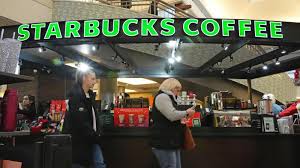Starbucks Stores Closing in Canada: What You Need to Know

Introduction
In recent weeks, Starbucks has announced the closure of several locations across Canada, a move that has raised concerns among customers and employees alike. The coffee giant, known for its popular beverage offerings and community hubs, is facing increased scrutiny as it navigates the challenges posed by changing consumer preferences and economic factors. This issue not only affects the affected locations but also has broader implications for the communities that rely on these stores for employment and social interaction.
Main Events
Seventeen Starbucks locations are set to shutter their doors in major cities such as Toronto, Vancouver, and Montreal. The closures are attributed to various reasons, including declining foot traffic, high rental costs, and the ongoing impact of the COVID-19 pandemic that has reshaped consumer behavior. Starbucks officials have stated that they are focusing on optimizing their store footprint and investing in locations that yield higher returns.
In a statement, a Starbucks spokesperson mentioned, “We continually assess our store portfolio to ensure that we are meeting our customers’ evolving needs while also being mindful of our partner (employee) experiences. The decision to close stores is never easy, and we value the contributions of our partners who are affected by this change.”
The Impact on Employees and Communities
The decision to close these stores has significant implications for employees who may face job displacement. Many of the affected workers have voiced their concerns about job security and the challenges of finding new employment in the current market. Community advocates are also worried about the impact on local neighborhoods, as Starbucks stores often serve as communal spaces where residents gather and socialize.
Conclusion
As Starbucks continues to adjust its strategy in response to the market dynamics, the closure of stores in Canada symbolizes a significant shift in the retail landscape. Analysts suggest that this move may pave the way for increased focus on digital services and drive-thru models rather than traditional storefronts. Consumers will be looking closely at how these changes unfold and what they mean for their local coffee culture. With Starbucks promising to invest in more high-performing locations, the hope remains that this transition could ultimately lead to a more robust and resilient coffee experience across the nation.









